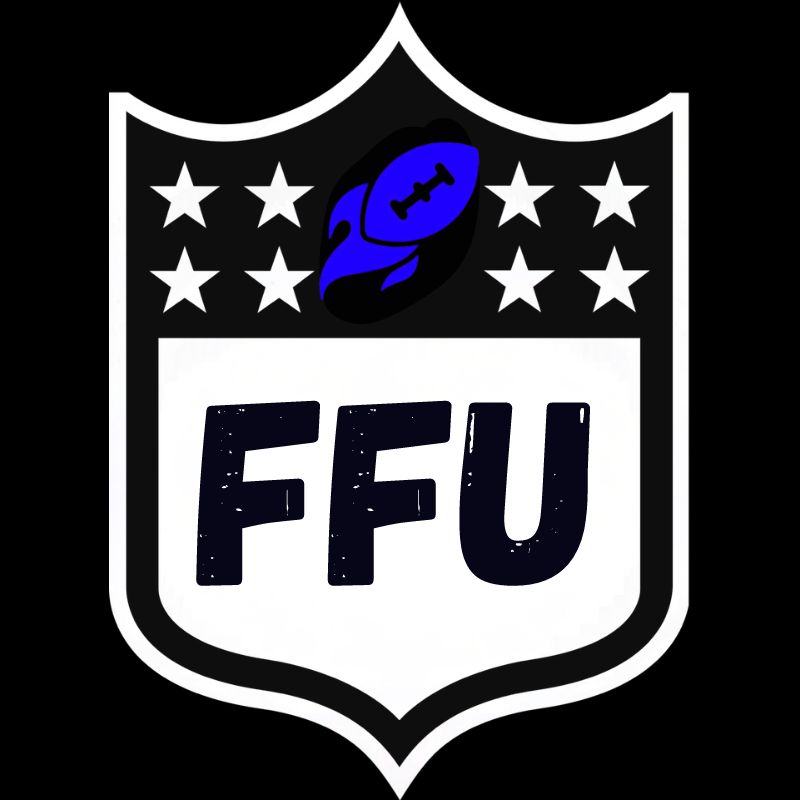For the general public, a standard fantasy football league suffices. If you’re reading this article, you may have grown weary of normal leagues and would like to try something new. Crash Course, a Fantasy Football Universe series, delves into unique formats. So, let’s start with Slaying the Fish: Epic Strategies for Scott Fish Bowl 14 Mastery.

How Does it Work?
Scott Fish Bowl is the biggest charity fantasy football league in the world, and it’s run by, you guessed it, Scott Fish. The Scott Fish Bowl is a redraft league that changes every year. Last year it was Superflex and tight end premium and featured over 3,000 fantasy managers all competing to be named champion. Every year there are between 200 and 300 individual leagues consisting of 12 teams in each. Half of the 3,000 participants make the playoffs and are eliminated each playoff week until a champion is crowned.
How is it different?
It’s different in just about every possible way. For starters, there is no buy-in to play in the league, but typically most managers make small donations to Fantasy Cares in honor of the league.
It’s almost entirely impossible to compare the league from one season to the next as the scoring and roster makeup changes each season to keep things interesting. In addition to the scoring and rosters changing every year, the themes for each division change as well. For the 2024 league, the theme is Movies. I will be drafting out of the fifth draft slot in the Halloween: Michael Myers Division.
How does the Draft work?
While there are almost 300 drafts, there are only two different formats.
- Live Draft: out of the 300 or so SFB14 leagues, a handful of them will be live in designated cities. The exact number changes but there are typically around 20 of them in major cities such as Los Angeles, New York, Chicago, and Vancouver. These drafts are your typical drafts with a two-minute timer for each pick and continue until all 22 rounds of the draft have concluded. The live drafts are all scheduled to take place between June 29th and July 21st.
- Slow Draft: the slow drafts are the same as far as the overall draft is concerned, the only difference is that they are done online through either Sleeper or MyFantasyLeague and function with an 8-hour pick clock for managers to make their selection. The draft has an overnight pause from 2:00 AM to 8:00 AM ET. Slow drafts kick off on July 8th, 2024.
A look at the Rosters
The rosters are incredibly deep for a redraft league and are closer to rosters you would expect in a dynasty league. This is because there is no trading allowed in SFB14, so they allow for deeper benches.
The 2024 starting lineups are unique and allow maximum flexibility. They feature 1 quarterback, 1 running back, 1 wide receiver, 1 tight end, 1 superflex, 5 flexes, and 1 kicker for 11 total starters. There are also 22 total players when you factor in the 11 bench players.
There is a slight variation to the roster composition depending on what platform you play on. MyFantasy League allows for kickers to be flexed, so MFL managers will have 6 flex players. On Sleeper, kickers cannot be flexed so you will be required to start 5 flex players and 1 kicker.
How does the Waiver Wire work?
The waiver wire works under the constraints of the typical Free Agent Acquisition Budget (FAAB) system. In SFB14 it is insanely important to draft well as the draft is deeper than all standard redraft leagues and will leave little-to-nothing on the waiver wire.
In addition to the waiver wire being thin, there is also no trading which makes the few players who do pop up throughout the year even more valuable than normal. If you lose a running back early in the season and his backup is available on the waiver wire, don’t use the typical FAAB management conservative approach. There will be almost no valuable players coming up throughout the season, so if a Puka Nacua or Kyren Williams is available in your league, bid aggressively because there won’t be many options to budget for later.
How the scoring works
SFB14 features unique scoring to the next level and will look to cash in on the new kick return rules.
Touchdowns/Conversions:
6 points per TD
2 points per two pt conversion
Passing:
1 point for 50 yards (0.02/per)
Rushing/Receiving:
1 point for 10 yards (0.1/per)
0.5 per first down
0.25 per rush attempt
Receptions:
QB/PK/RB is 0.5 PPR
WR is 1.0 PPR
TE is 1.5 PPR
Bonus:
TE extra 1 point per 1st down
Kicking:
3.3 points per made extra point
0.1 points per FG yard
Special Teams:
10 points per return TD
1 point for 5 return yards
The Regular Season and SFB14 Playoffs
This is where it gets truly tricky! The regular season will run for 11 weeks. You will play every team in your division exactly one time in the regular season.
The playoffs will begin in Week 12 with half of the overall field making it. All teams with 13 or more wins are automatically in the playoffs. As I stated above, there is a game each week against the league median, so why the regular season only lasts for 11 weeks, you can rack up a maximum of 22 wins.
Week 13 will cut down to 1,500 teams. In Week 14 will cut down to 1,000 teams. Week 15 will cut down to 500 teams. In Week 16 will cut down to 250 teams, and Week 17 will be the SFB14 finals with only 50 teams playing.
Each week, your team will get the average score of all your previous weeks, plus your score for that week. So it’s imperative to score as many points as you can each week as a few bad weeks can leave you with a severe handicap going into the playoff rounds. You can outscore other teams 150 to 100, but if you had a weekly average of 100 and everybody else averaged 200, you aren’t going to be able to overcome the deficit.
The Consensus Strategy
- Early QB: The two most common superflex strategies for SFB14 will largely depend on how the board falls to you. If you are in one of the early slots you are all but guaranteed to be drafting one of the elite quarterbacks. I advocate for drafting a quarterback with any of the first five slots, after that, you have to decide if you are going to draft the next tier of QB or load up on the elite receivers and follow the next strategy
- Zero RB: This build will often be the way you go, should you choose to draft your quarterbacks early. The quarterback market will thin out very quickly and once you’ve drafted your quarterbacks, many managers will begin piling up receivers in rounds 3 to 6. This can leave you on the outside of the elite running backs and force you to punt the position in hopes of landing a late-round back that turns into a league-winner.
- Heavy WR: This one is popular whether you draft a quarterback early or not. There are going to be many teams in SFB14 that get through four rounds with three or more receivers as the options dry up almost as quickly at receiver as they do at quarterback. If you don’t select a receiver early, you can quickly find yourself with a team full of WR 3s.
My Strategy
- Draft at least one Elite QB: Regardless of where I’m drafting. I’m not getting through three rounds of this draft without at least one quarterback. I’ve done this league in a build where I missed on the early quarterbacks and was forced to punt the position and it did not go well. You can very quickly find yourself with a starting quarterback who may not make it through the season as his team’s starter.
- Hammer WR/RB Late: Once SFB14 drafts find their way into the middle-rounds, the value at quarterback and tight end will be long gone. This is where it’s time to start throwing as many darts on upside running backs and wide receivers. It’s not uncommon to see a roster in this format consisting of only RB and WR selected after the double-digit rounds begin. This is where you will be drafting as many rookie receivers, and handcuff running backs as you can stuff onto your roster.
- Draft Your Handcuffs: Handcuffing your starting running backs can sometimes be a waste of a draft pick and can just clog up your bench, but in this format, it’s a necessary evil. This strategy is even more important if you draft a risky running back like James Conner or Alvin Kamara. If those are your starting running backs and they go down, the chances of their backup being available on the waiver wire is slim to none. You want to have your backups already on your roster and you want to have as many handcuffs rostered as possible. This piggybacks on my “hammer wr/rb late” strategy.
Format Bonus Strategies
- Bully Tight End: The scoring for tight ends in SFB14 is triple points. 1.5 points for receptions and 1.5 for first downs. Tight ends are going to be massive, so make sure you get yourself an elite one, and even two if possible.
- Target Return Men: The scoring is ridiculous for returners. 1 point for every 5 yards is massive and 10 points per return touchdown is insane. Target running backs and receivers who offer something in the return game as it could easily be the difference and give them an upside they lacked previously.
- Draft Multiple Kickers: This strategy only applies to MFL leagues. On Sleeper you can only start one kicker and the strategy is nullified. ON MFL, kickers can be flexed and it can be a good strategy to draft multiple kickers once the flex players have dried up. When it gets to the double-digit rounds, why would you want to draft WR55, when you can draft PK3 instead and flex that kicker? The last time I played in an SFB division on MFL I started multiple kickers in a week on multiple occasions.
In Closing
This format should be seen as a social experience where you can network and make friends in the fantasy world. I wouldn’t take it too seriously since even the best fantasy players have a 1 in 3,000 chance of winning.
The draft will be punishing and unforgiving and the waiver wire will be picked clean from the start. This format can often be similar to a best-ball league where you just load up on your guys and hope for the best. Ultimately, this is the fantasy football equivalent of the World Series of Poker. With a field this big, luck is going to be the most important factor.
At the end of the day, you will need to hope you draft the right guys, and that those guys stay healthy, and from there you will have to hope your guys can outperform everyone else’s guys when it matters most.
For me, I aim much lower and I just try to win my division. If at the end of the day, I have claimed my division regular season title, I consider it a success. Finding playoff success is just the cherry on top of the sundae.
Don’t forget to check out the rest of the Crash Course Series.

